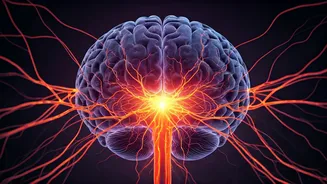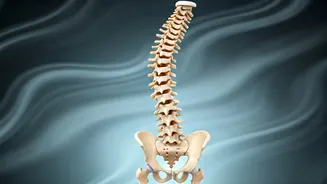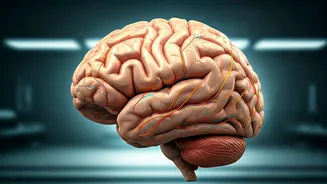The Pain Puzzle
The experience of pain is a multifaceted phenomenon, extending beyond the mere physical sensation. Pain is, in essence, a complex interplay between the body's
peripheral nervous system and the brain. When an injury occurs, such as a cut or a muscle strain, signals are sent from the affected area via nerve pathways to the spinal cord. From the spinal cord, these signals are then transmitted to the brain, specifically to regions like the somatosensory cortex, which is responsible for processing sensory information, and the amygdala, which is involved in emotional responses. However, pain perception is not simply a linear transfer of signals. The brain actively interprets and modulates these signals, influencing the intensity and nature of the pain experienced. The context in which the injury occurs, prior experiences with pain, and even psychological factors such as stress and mood, all play critical roles in shaping how pain is ultimately perceived. This is why two individuals with the same injury may report vastly different levels of pain.
Brain's Pain Pathways
The brain's role in pain perception is not merely a passive recipient of sensory information; it actively participates in the construction of the pain experience. Within the brain, various regions are involved in processing pain signals. The thalamus acts as a relay station, filtering and forwarding pain signals to other brain regions. The somatosensory cortex, as mentioned earlier, is responsible for mapping the location and intensity of the pain. The prefrontal cortex contributes to the cognitive evaluation of pain, including its meaning and importance. Furthermore, the limbic system, which is associated with emotions, plays a significant role in the affective aspects of pain, such as fear, anxiety, and distress. In chronic pain conditions, the neural pathways involved in pain processing can become altered. The brain may become more sensitive to pain signals, a phenomenon known as central sensitization. This can lead to persistent pain even in the absence of ongoing tissue damage. The pain pathways may also become more efficient at transmitting pain signals, further exacerbating the experience of pain.
Chronic Pain Explained
Chronic pain, unlike acute pain, persists for an extended period, typically lasting longer than three months, even after the initial injury or illness has resolved. It is a complex condition that affects millions of individuals. The underlying mechanisms of chronic pain involve a combination of biological, psychological, and social factors. As mentioned earlier, central sensitization plays a key role, where the nervous system becomes overly sensitive to pain signals. This heightened sensitivity can lead to amplified pain perception and even pain in the absence of any apparent stimulus. Furthermore, chronic pain can significantly impact a person's life, leading to difficulties with daily activities, work, and social interactions. It can also be associated with other conditions, such as depression, anxiety, and sleep disturbances, creating a vicious cycle of pain and distress. Effectively managing chronic pain often requires a multidisciplinary approach, combining medical treatments, physical therapy, psychological therapies, and lifestyle modifications to address the various factors contributing to the pain experience.
Effective Management Strategies
Managing pain, particularly chronic pain, requires a multifaceted approach. Medication is often part of the treatment plan, with options ranging from over-the-counter pain relievers to prescription medications such as opioids, antidepressants, and anticonvulsants. Physical therapy plays a crucial role in improving function, reducing pain, and restoring movement. Exercises and stretches can help strengthen muscles, improve flexibility, and enhance overall physical well-being. Psychological therapies, such as cognitive-behavioral therapy (CBT), can help individuals develop coping mechanisms to manage pain and improve their mental health. CBT focuses on changing negative thoughts and behaviors that contribute to pain. Lifestyle modifications, including regular exercise, a balanced diet, and adequate sleep, are also important. These lifestyle changes can promote overall health and reduce pain. In addition, alternative therapies such as acupuncture, massage therapy, and meditation may provide pain relief for some individuals. A personalized approach that considers the individual's specific needs and preferences is essential for effective pain management, which may include a combination of these strategies to achieve optimal outcomes. Seeking professional guidance from healthcare providers is crucial for developing a comprehensive pain management plan.












